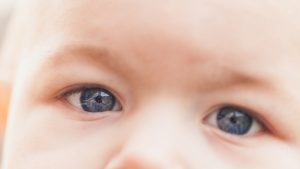Age-related macular degeneration (AMD) is a degenerative disease of the eyes and is one of the most common causes for visual impairment in industrialised countries. In the past multiple studies have linked visual degeneration to low birth weight.

© unsplash.com
Fetal development is suspected to play a role in the development of age-related macular degeneration, but the link between low birth weight and AMD has not been well studied yet. To further investigate this link, Fieß et al. conducted a study with data from participants of the Gutenberg Health Study cohort in Germany. 6492 participants at an age of 35 to 74 years were included, for whom data for AMD grading and self-reported birth weight were available. They were examined at the beginning of the study and at a 5-year follow-up. To analyse differences, participants were divided into three groups according to their self-reported birth weight (low: < 2500g, normal: 2500g-4000g, and high: > 4000g).
At the start of the study, ophthalmologic exams were conducted for all participants to assess the condition of their eyes. In addition, arterial hypertension, body mass index, smoking status, socioeconomic status, blood lipids and the history of AMD in family members were assessed to adapt the calculations for other risk factors for the development of AMD in the participants.
The results of this study indicate that low and high birth weight might be risk factors for the development of retinal degenerations in adulthood. When comparing the three birth weight groups, the group with the lowest birth weight had the highest prevalence for AMD, amounting to 11.2%. The high birth weight group showed a prevalence of 8.4% and the normal birth weight group had a prevalence of 6.5%. Also, at the 5-year follow-up, more subjects had developed AMD in the low birth weight group, compared to the other two groups. This suggests that early life might be one of the origins for AMD risk factors, which can play an important role in the long-term care of low birth weight individuals.
One of the limitations of this study was due to the lack of data for gestational age. Therefore, low birth weight may have been linked to prematurity, but it was not possible to analyse the impact of premature birth. As preterm birth itself can affect the development of the eyes in childhood and may lead to AMD in adulthood, further research should be conducted. Apart from the limitations, some of the strength of this study were the large sample size with 6492 participants, the strict standardisation of examinations and withholding the birth weight data from examiners.
Despite the limitations due to missing data, the study of Fieß et al. shows a high probability for a negative effect of low birth weight on the development of AMD.
Paper available to view at: ARVO Journals
Full list of authors: Achim Fieß, Hisham Elbaz, Christina A. Korb, Stefan Nickels, Andreas Schulz, Thomas Münzel, Philipp S. Wild, Manfred E. Beutel, Irene Schmidtmann, Karl J. Lackner, Tunde Peto, Norbert Pfeiffer, Alexander K. Schuster
DOI: 10.1167/iovs.19-27964

